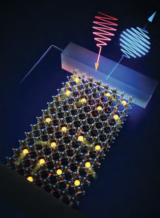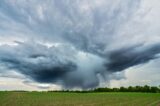A fellowship alumnus helps himself and others to research on Argonne’s Aurora supercomputer.

Categorical imperative
A Montana State fellow charts a path from physics and modeling to a form of pure math called category theory.

Predicting chaos
A Caltech fellowship recipient works on the physics underlying turbulence, or the chaotic gain of energy when fluids move in unpredictable ways.

Subduing software surprises
A Cornell University fellowship recipient works on methods for ensuring software functions as expected.

‘Crazy ideas’
A UCSD engineering professor and former DOE CSGF recipient combines curiosity and diverse research experiences to tackle nanoscale questions and energy applications.

Star treatment
A UT Austin-based fellow blends physics and advanced computing to reveal cosmic rays’ role in stellar events.

New home for science and tech talk
With the fifth season’s first episode, a DOE CSGF-sponsored podcast launches a website.

Bolt basics
A Rice University fellow simulates the ins and outs of the familiar fasteners in pursuit of lean machines.

‘Putting it all together’
A Vanderbilt University fellowship recipient applies math, physics and computation to sort out semiconductor defects.


Decisive achievement
A computational sciences fellow models COVID-19 virus variants and examines how people weigh complex decisions.

Learning climate
A Colorado State fellow employs machine learning for climate modeling, putting provenance behind predictions.

Statistically significant
A LANL statistician helps cosmologists and epidemiologists grasp their data and answer vital questions.

Planet-friendly plastics
A Los Alamos team applies machine learning to find environmentally benign plastics.

A split nanosecond
Sandia supercomputer simulations of atomic behavior under extreme conditions advances materials modeling.

A colorful career
Argonne’s Joe Insley combines art and computer science to build intricate images and animations from supercomputer simulations.

Mapping the metastable
An Argonne National Laboratory group uses supercomputers to model known and mysterious atomic arrangements, revealing useful properties.

The human factor
A PNNL team works to improve AI and machine learning tools so that grid operators can feel confident using them.

Simulation looped in
CogSim, a machine-learning approach modeled on the brain, coordinates simulations, experiments and data-analysis to yield results in fields from fusion energy to COVID-19.

Boxing in software
At Los Alamos, novel container software is accelerating innovative science while ensuring supercomputer reliability and uptime.



Optimized for discovery
A computational mathematician finds a national lab ideal for a highly collaborative career.

Happy returns
Sandia’s Humberto Silva III applies uncertainty quantification to model smooth atmospheric reentry from space.

Extreme 3D
Argonne’s Advanced Photon Source upgrades to large-sample 3-D imaging beyond the depth of field – with assistance from high-performance computing.





